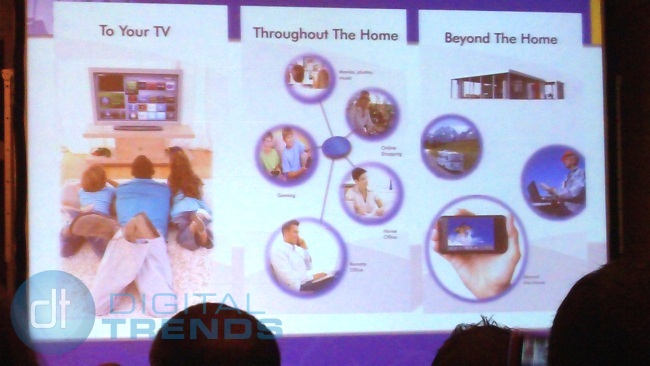
To celebrate its 15th anniversary, Netgear is taking home networking beyond the PC and home. At its pre-CES press conference a few minutes ago, Patrick Lo, CEO and founder of Netgear announced eight new wireless routing products, all of them aimed at extending Wi-Fi connections to non-PC products like tablets, smartphones, and HDTVs. In addition, the company is launching a new device that allows you to organize & stream video, pictures, and music to any device on a home network and anywhere in the world.
2011 is a tipping point, says Lo: “Before we were connecting primarily PCs, now we’re going on to primarily connecting mobile devices.” Netgear hopes to help integrate tablet PCs, handheld video game systems, smartphones, and other portable media players into the home network.
Below is a quick run-down of the products shown.
Connecting home media

To manage content, Netgear demonstrated two relatively new products: the NeoTV 550 Ultimate HD Media Player and the ReadyNAS Ultra 2 Home Media Server. NeoTV automatically scans and organizes videos, photos, and music from across devices on your home network and lets you watch it on your TV or from the Web. The ReadyNAS media server takes it one step further, allowing you to aggregate all of your content and stream it anywhere on your network and across the Web using a technology Netgear is calling ‘Orb.’ The ReadyNAS can also connect up to Tivo boxes.
Routers

In addition, Netgear is already on top of the trend toward 4G mobile broadband. The company announced a new 3G and 4G Wi-Fi router in collaboration with Verizon Wireless (in the U.S.). Bell Canada will also sell the device.
Wireless extensions

Overall
Netgear has a good showing this year. While its demonstrations lack the sexiness of a new tablet or 3D TV, the company announced a number of new products that are far more useful. In its 15th year, Netgear seems to have its finger on the pulse of where networking is headed. As more and more media leaves the physical, disc-based world, it is becoming more and more unwieldy to manage it across devices. It’s good to see a company attempting to create products that solve problems and fill voids.


